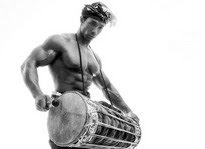


Date of Birth
5 February 1976, Surin, Thailand
Birth Name
Panom Worawit
Height
5' 6" (1.68 m)
Mini Biography
Panom Yeerum was born on February 5, 1976, in the northeastern province of Surin, Thailand. His parents were elephant herders. Panom watched martial arts films as a young kid and began to emulate some of his idols, from Bruce Lee to Jackie Chan to Jet Li. After seeing the Thai action film Kerd ma lui (2004) ("Born to Fight"), Panom met and studied martial arts and stunt work as a teen under the director of that film, Panna Rittikrai. Panom went to university where he studied a variety of martial arts, from tae kwondo to judo. It was not long before Panom would get work, doubling for Robin Shou and James Remar in Mortal Kombat: Annihilation (1997), and when his demo reel was seen by director Prachya Pinkaew, the film Ong-bak (2003) was created for Panom, who is now going by the name of Tony Jaa in hopes of bringing his style of action to international audiences.
IMDb Mini Biography By: Ninja01
Trivia
Stunt-man turned actor who does not use any wire work or CG effects in his stunts.
Highly Skilled in Muay Thai, Tae Kwon Do, swordplay and gymnastics.
Watching Jackie Chan movies and a Thai movie called Kerd ma lui (2004) ("Born to Fight") influenced him to do stuntwork and eventually become a action star, but he says his biggest influence is Bruce Lee.
Born in a northeastern province of Thailand called Surin.
Robin Shou's stunt double in Mortal Kombat: Annihilation (1997).
Does 8 hours of gymnastics, Muay Thai, and other sports training a day.
Is actually of Cambodian descent, more known as "Khmer Surin".
He speaks Thai, Khmer and he is learning English.
Personal Quotes
"Jackie Chan, Jet Li and Bruce Lee are my masters; they're the inspiration for my work. Bruce Lee was a heavy fighter who threw hard punches. Jackie moves very fast and uses a lot of comedy, and Jet Li is very fluid. I've tried to combine all of their styles and added some things of my own."
"I want a strong foundation in Thailand. Hollywood? Maybe in the future."


















